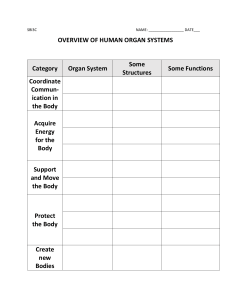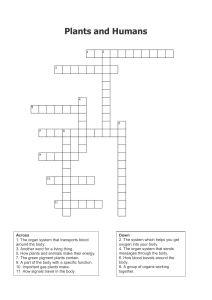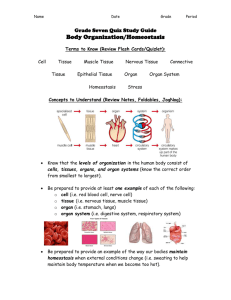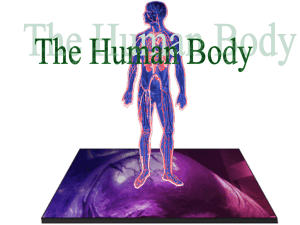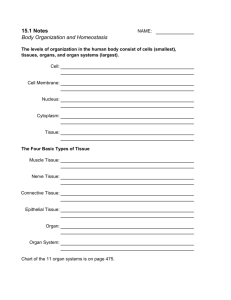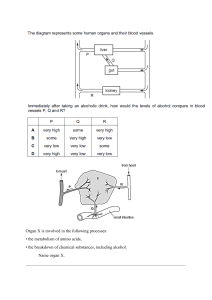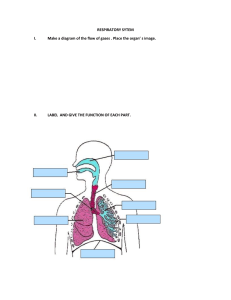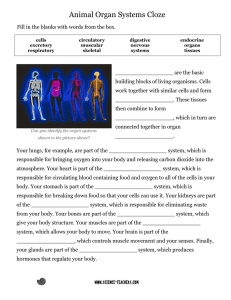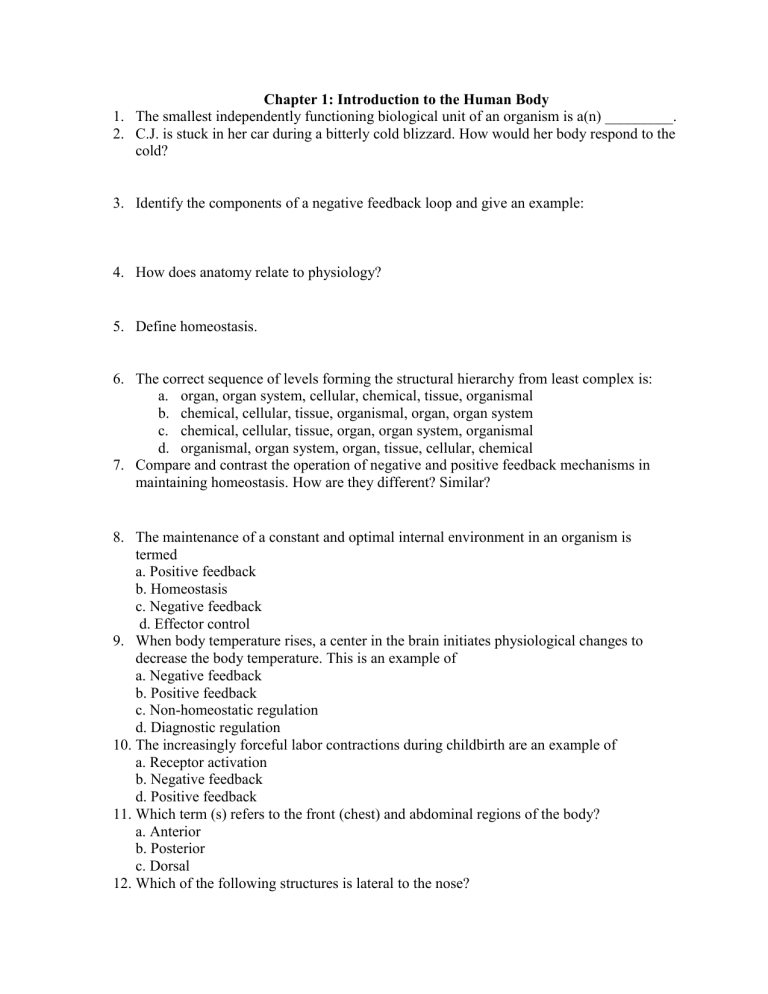
Chapter 1: Introduction to the Human Body 1. The smallest independently functioning biological unit of an organism is a(n) _________. 2. C.J. is stuck in her car during a bitterly cold blizzard. How would her body respond to the cold? 3. Identify the components of a negative feedback loop and give an example: 4. How does anatomy relate to physiology? 5. Define homeostasis. 6. The correct sequence of levels forming the structural hierarchy from least complex is: a. organ, organ system, cellular, chemical, tissue, organismal b. chemical, cellular, tissue, organismal, organ, organ system c. chemical, cellular, tissue, organ, organ system, organismal d. organismal, organ system, organ, tissue, cellular, chemical 7. Compare and contrast the operation of negative and positive feedback mechanisms in maintaining homeostasis. How are they different? Similar? 8. The maintenance of a constant and optimal internal environment in an organism is termed a. Positive feedback b. Homeostasis c. Negative feedback d. Effector control 9. When body temperature rises, a center in the brain initiates physiological changes to decrease the body temperature. This is an example of a. Negative feedback b. Positive feedback c. Non-homeostatic regulation d. Diagnostic regulation 10. The increasingly forceful labor contractions during childbirth are an example of a. Receptor activation b. Negative feedback d. Positive feedback 11. Which term (s) refers to the front (chest) and abdominal regions of the body? a. Anterior b. Posterior c. Dorsal 12. Which of the following structures is lateral to the nose? a. Eyes b. Mouth c. Ears d. Both A and C 13. The wrist is ____ to the elbow. a. Proximal b. Distal c. Lateral d. Horizontal 14. The chest is to the umbilicus. a. Anterior b. Superior c. Posterior d. Medial 15. Which of the following regions refers to the upper arms? a. Cervical b. Brachial c. Antebrachial d. Femoral 16. What is the term for behind the knee? a. Patellar b. Crural c. Sural d. Popliteal 17. In what quadrant is the liver located? a. RUQ b. LUQ c. LLQ d. RLQ 18. The heart is part of the ____ body cavity? a. Pericardial b. Thoracic c. Anterior d. All of the above 19. What is the physiological function of the visceral and parietal layers? a. Cushion the heart b. Protect against friction c. Produce pericardial fluid d. All of the above 20. A cut that passes parallel through the long axis of the body and divides the body into equal left and right halves is: a. Frontal b. Sagittal c. Midsagittal d. Transverse
